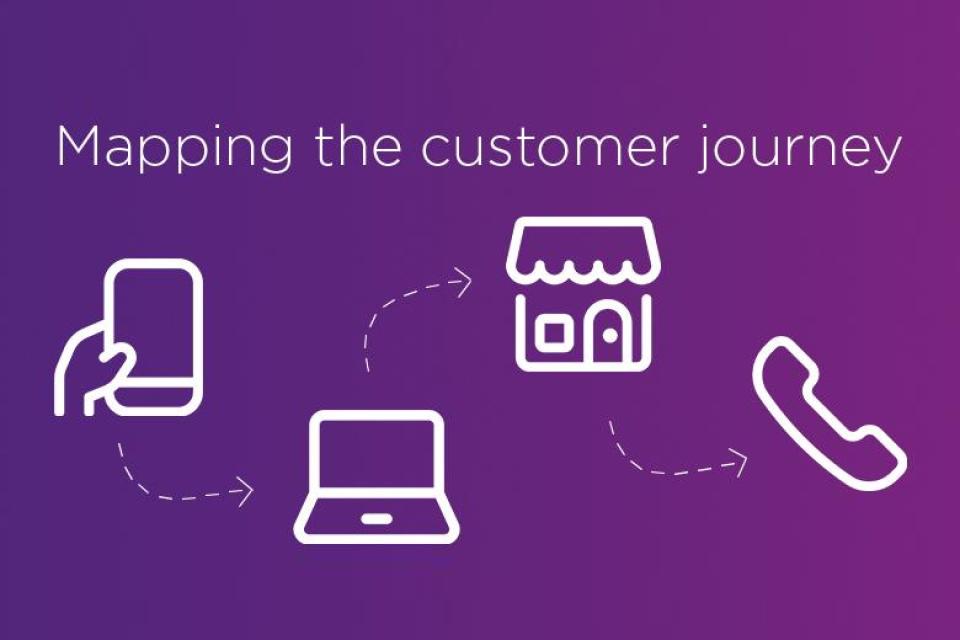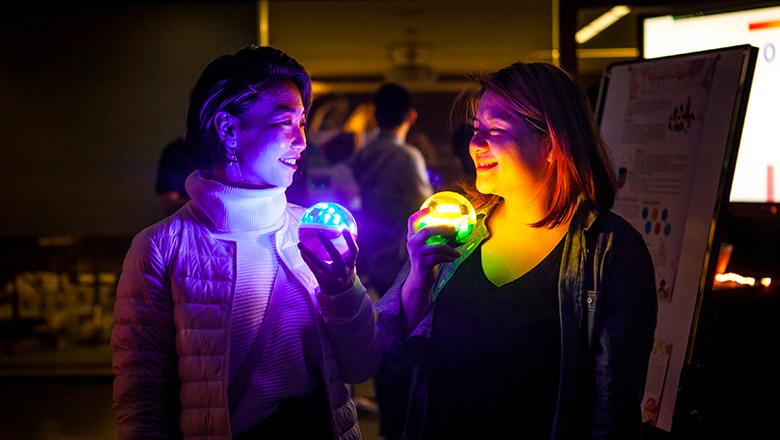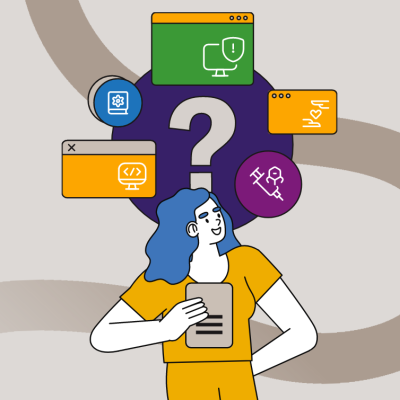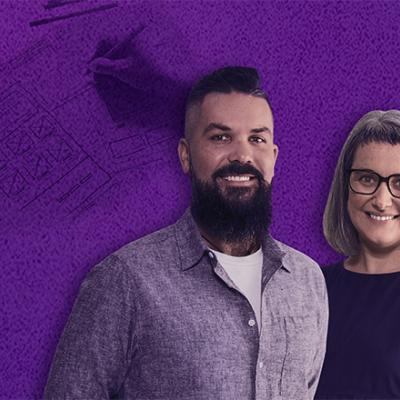Design is everywhere – it's part of our daily lives. It has the power to change the way people think, feel, behave, communicate and function. And so do you, with a career in design.
Careers in design are incredibly varied, but all boil down to this: the ability to solve problems to meet the needs of the user. Whether it’s how to make a complicated app user-friendly, or how to make a building more energy efficient, you can choose what kind of problems you’re interested in solving through the major (or specialisation) you focus on during your studies.
Bachelor of Design job opportunities can be found in an array of sectors, with organisations looking for skills as specific as web design, through to broader user experience design. Graduates also have a wide range of interchangeable skills, setting them up for incredible opportunities to explore different paths and promotions throughout their design career.
So, let’s explore the Bachelor of Design careers you could be working in to change the way people experience their everyday lives.
Product designer
In the simplest terms, a product designer develops new products – virtual or physical – to improve the customer experience. In this design career, you'll be using design to create products that will make life better for people.
Product designers continue to find ways to improve the products they create by solving any problems that may arise, to ensure users remain engaged and happy. Think about how often the apps you download bring out new updates, or how Apple releases a new iPhone every year. This is product design in action.
What do product designers do?
Day-to-day product designer responsibilities include:
- working with UX researchers to conduct interviews, focus groups and surveys to determine user needs
- leading brainstorming sessions with other designers, and translating these into actionable ideas
- liaising with brand teams to ensure new designs adhere to brand image
- creating product sketches and prototypes
- suggesting ways to improve the product during testing phases
- discussing and actioning user feedback
- continuing to identify and solve problems with the product throughout its lifespan.
Product designer skills
A product designer needs to display an aptitude for:
- teamwork
- problem-solving
- giving and receiving constructive feedback
- project management
- time management
- analysis.
How could you help the world with a career in design?
Careers in design can be challenging, rewarding and fulfilling. It's more than just a job: it's looking at the bigger picture.
Service designer
A service designer looks at not only how the customer or user interacts with the product, but also how various stakeholders (such as salespeople and customer service representatives) are involved in service delivery and customer experience.
When users or customers interact with a product, it can be through an omnichannel approach – desktop, mobile, physical shopfront, etc. Service design is concerned with this complete brand experience, not just the customer’s experience with the product.
For example, a customer discovers a pair of shoes they want to purchase while browsing through a social media app on their phone. They decide to switch to their laptop and look up the brand of shoe to read reviews via their web browser. They then go visit the physical store to try on the shoes, which they purchase. When they get home, they notice that they accidentally picked up the wrong colour, so they call the customer support team to arrange an exchange. This customer journey, from brand awareness to post-purchase care, is carefully analysed and curated by the service designer.

What does a service designer do?
Service designer responsibilities include:
- working with various stakeholders to identify any problems occurring in the service delivery process
- creating customer journey maps to find any existing or potential barriers to customers and users accessing the product
- brainstorming ways to remove barriers and make the customer experience easier and smoother
- designing service blueprints
- presenting blueprints to management and all relevant stakeholders
- monitoring changes to service delivery and altering according to how they’re received by the customer.
Service designer skills
To excel as a service designer, you need to be able to:
- look at the bigger picture
- communicate effectively with multiple stakeholders
- consolidate ideas
- prioritise
- empathise
- identify and solve problems
- work collaboratively.
Out of all the design careers, a service designer in particular needs to have an aptitude in piecing together a puzzle. There are a lot of shifting (and sometimes conflicting) elements to the customer experience, and the job of the service designer is to get them all moving smoothly.
UX designer
This is one of the most popular jobs in design over the last few years. At the core of it, a user experience (UX) designer’s role is to make products chiefly within the digital realm (like websites, apps and online forms) easy and enjoyable for the customer to use. They’re concerned with the overall user experience – how every touchpoint on the customer’s digital journey impacts the way they feel and behave. For a UX designer, the customer or user's needs are always front and centre.
What does a user experience designer do?
User experience design jobs list the following as common everyday duties and responsibilities:
- conducting competitor analysis
- undergoing user research and customer analysis
- creating user personas
- strategising the best ways to present a product or experience
- mapping customer experiences
- testing the customer journey
- coordinating and collaborating with UI (user interface) designers and developers
- analysing outcomes.
User experience designer skills
User experience designers need the following skills:
- adaptability
- empathy
- clear and concise communication
- teamwork
- problem-solving.

Design manager
A design manager is the head honcho of the design team in an organisation. It's one of the most highly sought-after careers in design for those who have been working in the field for years.
The design manager takes on predominantly a leadership and stakeholder management role. They mentor the other designers and help to ensure their ideas and work align with the organisation’s overarching goals and principles. They also bridge the gap between business and design objectives.
At the end of the day, an organisation needs to ensure their product (whether it’s a gaming console or a building) looks great and delivers a superb user experience, but they also need to stay within budget and make a profit. The design manager juggles these sometimes-conflicting priorities.
Design managers work across all industries, from engineering to architecture, construction, finance and health. It often takes several years of experience as a designer to work your way into a design manager position.
What does a design manager do?
Design manager responsibilities include:
- managing, mentoring and training a team of designers
- ensuring quality standards and protocols are being followed during every step of the project
- developing and maintaining budgets
- collaborating with marketing, brand and leadership teams to define and deliver goals
- delegating tasks to team members based on skills and strengths
- reporting on project progress.
Design manager skills
A design manager requires the following skills:
- time management
- prioritisation
- problem-solving
- leadership
- negotiation
- stakeholder management
- business acumen.
Shaping careers in design
You may have noticed there are several overlapping duties and skills mentioned in the design careers we’ve outlined in this article. Some of the careers may sound quite similar, and when searching for jobs in design, you may find organisations using these different job titles interchangeably. Design is a constantly evolving sector and one that’s in high demand by many industries – some of which find it hard to keep up with emerging specialisations.
For this reason, when searching for jobs in design (especially in-house), it’s important to have a clear and succinct elevator pitch for your skills. You may find that your skills can take you down several different career paths or fit under a variety of job titles. This is part of the appeal of design. You can use your skills and knowledge to tailor a position to your interests and shape a career in design that you’re passionate about.
Want to know more about the types of careers you can pursue with a university degree in design, engineering, architecture or information technology?






